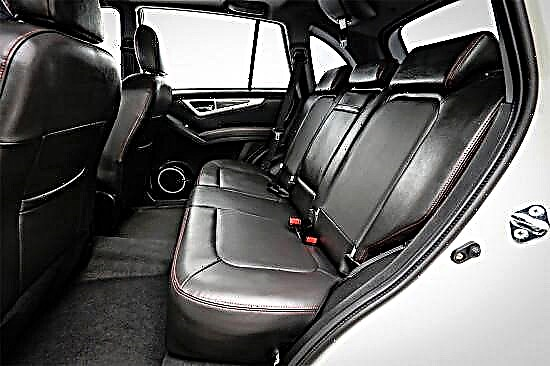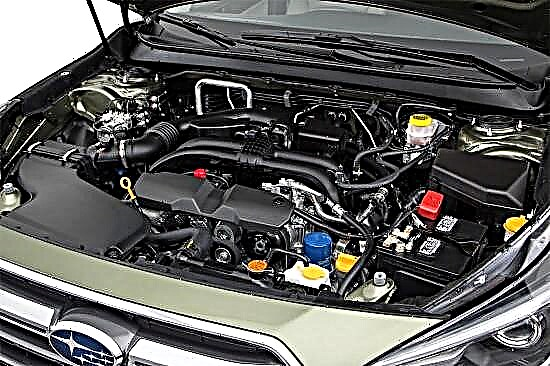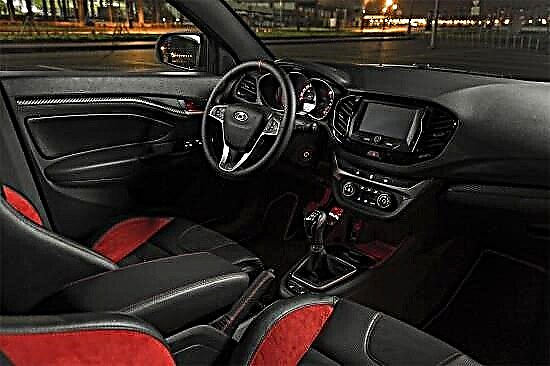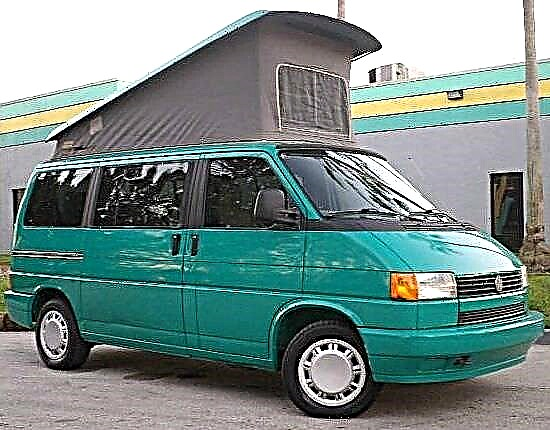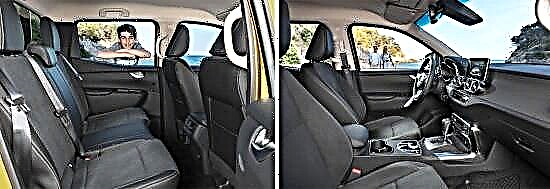Trailer - a vehicle not equipped with an engine and intended for movement as part of a power-driven vehicle. The term also applies to semi-trailers and trailers-dissolution (Chapter 1 of the SDA RF). According to their purpose, trailers for passenger cars differ as cargo trailers, caravan trailers, specialized trailers for the transportation of various equipment.
By carrying capacity trailers for passenger cars are divided into categories:
- О1 - trailers, the maximum mass of which is not more than 0.75 tons;
- О2 - trailers, the maximum mass of which is over 0.75 tons, but not more than 3.5 tons.
The main elements of the trailer structure: frame, body, drawbar and suspension. The drawbar is an A-shaped (or I-shaped) horizontal arm attached to the front of the trailer frame. It contains a hitch assembly that is attached to the towbar of the car, safety cables, and on some trailers - a wheeled or folding stand.
A trailer can have one, two or more axles. For trailers of passenger cars, such types of suspensions are used as spring dependent, lever-spring independent, spring dependent, rubber-wired independent and torsion independent.
Passenger car trailers can be equipped with a working brake system (hydraulic inertial type), as well as emergency and parking brakes.
To drive with a trailer, a license with a category “B” is enough (according to the current legislation), if the permissible maximum mass of the towed trailer does not exceed 750 kg. Or if the permissible maximum mass of the trailer does not exceed the mass of the curb vehicle in category “B”, and the permissible maximum mass of such a combination of vehicles does not exceed 3,500 kg.
In the event that a trailer or a “car and trailer” train does not fit into these frameworks, you will have to open additional category “E” in your rights. The cost of training will be about 8000-10000 rubles, the training period is ~ one and a half months.
The trailer can be used with almost any vehicleif its (trailer's) permissible maximum mass does not exceed the mass of the equipped vehicle belonging to category “B”. As for the hitch - the towbar, technically it can be installed on any car.
Necessary additional equipment of the car for using the trailer - installation of a towbar, as well as the removal of additional electrical wiring for lighting devices (dimensions, turn signals and brake lights) of the trailer.
Before choosing a trailer for your car, you need to answer the question: why do you need a trailer - to carry bricks-boards, a jet ski or a boat? Or maybe a mobile country house? After that, we carefully read the technical characteristics of the trailer and evaluate whether the future train fits into category “B” or not.
It will also be useful to familiarize yourself with the instructions for your car, where there is an item “maximum mass of a towed trailer equipped / not equipped with brakes”. You can also search the Internet for this information or call your dealer. Only then proceed with the selection of the trailer.
Features of driving with a trailer consist in the fact that a trailer, especially a loaded one, significantly reduces the acceleration dynamics of the vehicle and increases the braking distance. This must be taken into account when braking and overtaking.
It is necessary to brake smoothly - regardless of whether the trailer is empty or loaded. It is important to keep your distance from the vehicle in front. Before turning, it is better to slow down in advance, and pass the turn itself "vnatyag". Jerking when braking, especially when cornering, can cause a trailer or car to skid and "fold".
At high speeds, the trailer is susceptible to swinging from side to side. According to traffic rules, the maximum speed of a car with a trailer outside settlements on highways should not exceed 90 km / h, on other roads - 70 km / h.
When driving with a trailer, changing lanes in the stream of cars, maneuvering and parking in urban conditions are significantly complicated. Reversing is especially difficult. At the same time, a large trailer will greatly impair the rear visibility. In the salon mirror, for example, nothing becomes visible, except for your own trailer-dacha. If necessary, you can install additional, so-called caravan, rear-view mirrors. They are installed either on the hood of the car or on the standard rear-view mirrors. With trailers with a large body area - such as a caravan trailer or a tilt cargo trailer. Care should be taken when driving in strong winds.
It is necessary to load the trailer correctly - the load should be distributed evenly. So that its center of gravity is above the axle (if it is one) or between the axles of the trailer. A forward shift in the center of gravity will place unnecessary stress on the hitch and the entire rear of the vehicle, reducing traction on the steered wheels. Moving backwards will raise the rear of the vehicle, which will reduce traction on the rear wheels. In this case, the center of gravity of the transported cargo should be as low as possible, since the higher it is, the more inclined the trailer is to longitudinal and lateral swing, which impairs controllability.
The load should not protrude beyond the dimensions of the trailer (according to Chapter 23 of the SDA of the Russian Federation) at the rear by more than 2 m, and in width - to be more than 2.55 m. The height of the trailer with a load should be no more than 4 m from the surface of the carriageway.
In this case, the cargo protruding beyond the dimensions of the vehicle in front and behind by more than 1 m (or on the side by more than 0.4 m from the outer edge of the parking light) must be marked with the identification signs “Oversized cargo”, and at night and in conditions insufficient visibility, in addition, in the front - with a lantern or reflector of white color, in the back - with a lantern or reflector in red.
Cannot be transported in a trailer, first of all, - people (including in the trailer-dacha). It is not allowed to transport explosive and flammable substances. Such things include a can of gasoline and a household gas cylinder. Of course, de facto everyone carries them, and the traffic police inspectors do not find fault. But if there is a whole warehouse of fuel and lubricants in the trailer, the inspector can stop you on completely legal grounds.
In addition, according to the prescription of p. 23.3. Traffic rules of the Russian Federation, the cargo should not restrict the view, interfere with control, violate the stability of the vehicle, cover external lighting devices and reflectors, registration and identification marks, and also not interfere with the perception of signals given by the hand. Also, the cargo should not create noise, dust, pollute the road and the environment.
Influence of the trailer on the technical condition and service life of the vehicle. A trailer always means extra weight, which means an additional load on the car: first of all, on the engine and transmission, the wear of which, other things being equal, is faster.
However, a lot depends on the composition itself. For example, for a large SUV with a five-liter engine, which carries a light trailer with a jet ski and a C-class sedan carrying a bulky dacha trailer, the “additional load” and acceleration of wear will be different. In the first case, they are reduced to almost zero, and in the second they will become noticeable after two or three years of operation.
Fuel consumption when using a trailer increases (on average) by 5 ~ 15%, sometimes more. But here a lot depends on the proportions of the composition “car power - trailer weight”. Driving conditions also contribute: mileage in the city and on country roads.
Putting winter / summer tires on the trailer in Russia it is desirable, but not necessary.Moreover, most of the new trailers, especially those of domestic production, are sold with all-season tires. But those who are going on a trip to the EU countries should remember about the seasons: in the EU, for trailers, a seasonal change of tires is mandatory.
For cases - if the trailer suddenly unhooks on the go there is a special emergency braking system. It is arranged quite simply: a safety cable clings to the hitch, which is weakened in normal mode. If the coupling with the vehicle is broken and the trailer is disconnected, the cable is pulled and actuates the drive of the brake mechanisms of the trailer wheels.
In the wiring harness for the trailer, there are warning lights in the passenger compartment of the vehicle, indicating the connection / disconnection of the trailer.
It is mandatory to register a trailer with the traffic police. The trailer must be registered at the owner's place of residence no later than five days after its purchase, deregistration or customs clearance. When selling through a retail network or during customs clearance, a vehicle passport (PTS) is issued to the trailer and a sales and purchase agreement is drawn up.
The PTS contains information about the make and model, as well as the identification number (VIN), year of manufacture, gross weight, body and / or frame number. The purchase agreement is a document confirming the ownership of the trailer. Upon registration, the owner of the trailer is issued a certificate and a license plate.
The trailer must also be inspected. Trailers are subject to technical inspection once every two years if no more than five years have passed since the year of their production (including the year of production), and once a year if more than five years have passed.
The month the trailer is presented for inspection is indicated in the technical inspection coupon. As a rule, it is installed the same as that of the car with which the trailer is operated, or it is selected in accordance with the last digit of the state registration plate.
Compulsory motor third party liability insurance is required to insure the trailer. The cost of the policy for the year is 711 rubles. In addition, the trailer can be insured under CASCO insurance. Such a policy will cost, on average, 2% of the value of the trailer for the risk of “damage” and 0.5% for the risk of theft.
You do not need to pay transport tax for a trailer. According to the current legislation, trailers, as not related to self-propelled vehicles, are not subject to transport tax.
Approximate prices for trailers:
- Cargo trailer, gross weight from 450 to 2500 kg from 20,000 to 160,000 rubles.
- Camping trailer (as standard) from 250,000 rubles.
- Trailer for transportation of motor vehicles from 25,000 rubles.
- Trailer for transportation of boats, gross weight from 400 to 3500 kg from 25,000 to 200,000 rubles.
- Trailer for transporting horses from 150,000 rubles.
- Commercial kiosk trailer from 170,000.

